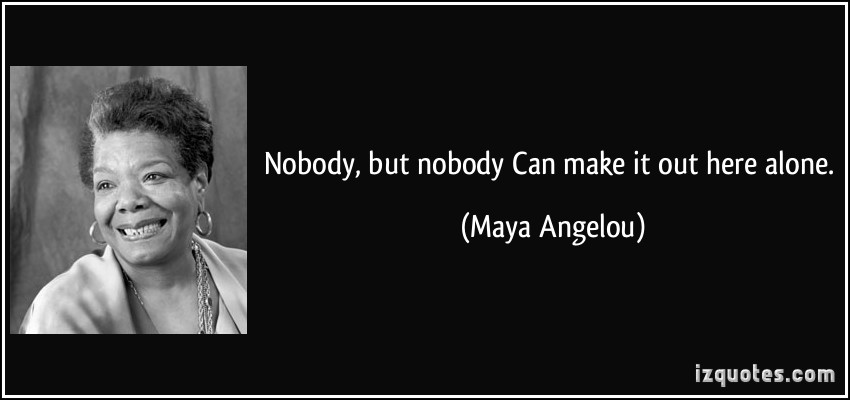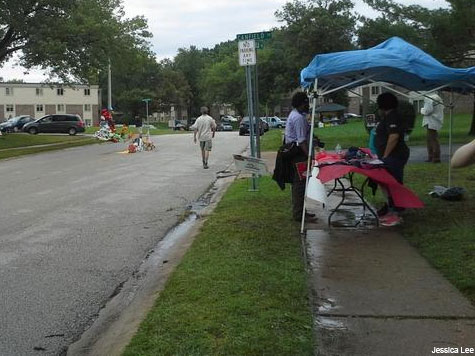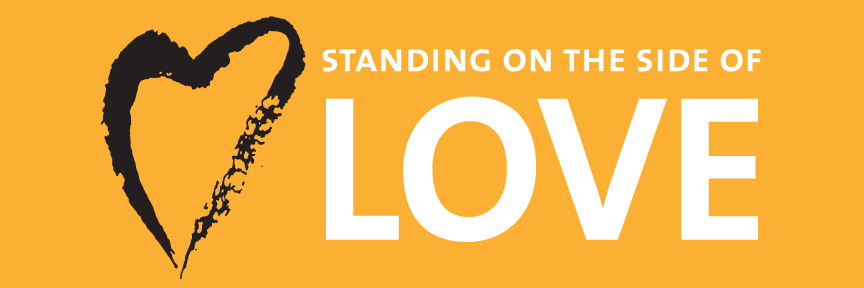First Parish Church of Groton, Groton, MA
Karen G. Johnston, Intern Minister
October 12, 2014
(a link to the audio of this sermon is here)
Let me begin with gratitude. For you, this body of people who makes a place for me and my calling to ministry. For this body that carried me to this place, up these stairs, and to this moment. For this planet earth, with its bodies of water, its landmasses, its place in this vast universe.
Thank you for this journey we have begun together, I as your intern minister and each of you as my teachers, my companions, my inspirations, and no doubt, my source of curiosity and delight. Thank you for the trust you are extending to me – you, Unitarian Universalists, who are free in your pews and I, Unitarian Universalist, who is free in this pulpit – may I earn that trust.
May we grow great things together.
~~~
So this is the assignment. The theological theme for this month’s worship is sanctuary. So when you – that is to say, when I – prepare worship for today, be sure to include sanctuary. Whatever that means to you.
Oh, right, this will be your first time in the pulpit, so remember that they want to get to know you. Tell them something, but not too much. Be sure that you don’t talk about yourself so much that people can’t hear their own lives in what you are saying.
Don’t forget that for more than one person sitting in those pews, a heart is breaking. Be of comfort to them.
And, by the way (I am learning to pay attention to the by-the-ways…), the children will have built a sukkah for the Jewish holiday of Sukkot. It will be on display for the congregation and the community. There will be an invitation after worship to spend some time in the sukkah. Weave that into the service, if you can…
Nope. Not daunted. Not me. I have been known to take on a challenge or two (like adopting two children out of the foster care system as an only parent – they were two and nearly four when I first met them; they are 18 and 20 now).
So I was like: bring it on!
And then I was like: Oh. My. Goodness.
What to do when daunted? When in need of a dose of courage? When I need to show up, even when I think I can’t or don’t want to, but have to, I remember Maya Angelou’s wise words (from her poem, Alone, read earlier in the service):
 It’s not just for courage-making. It’s good for grief-consoling. And hope-inducing. And heart-mending, this coming together with one and for one another.
It’s not just for courage-making. It’s good for grief-consoling. And hope-inducing. And heart-mending, this coming together with one and for one another.
Though church language often has “sanctuary” to mean this location where we are gathered – a room, a material space – much more compelling to me is sanctuary as embodiment and as process. Sanctuary as human interaction, rather than bricks and mortar, is so much more in line with our Unitarian Universalist covenant of relationality and accountability to one another and the wider world.
Lying, thinking
Last night
How to find my soul a home
Where water is not thirsty
And bread loaf is not stone
I came up with one thing
And I don’t believe I’m wrong
That nobody,
But nobody
Can make it out here alone.
Sometimes sanctuary is concrete, is shelter around us. Like the sukkah which is traditionally connected to harvest time. And gratitude, as well, for the shelter that was found and made during the forty years of wandering the wilderness after the exodus from Egypt.
Similar shelters in daily life were a source of protection for shepherds – people who could not remove themselves to a safe place, but had to create it with found objects and faith in their god, as they continued their task of providing for the betterment of their community.
We could say that sukkah gave the shepherds two kinds of sanctuary, two kinds of freedom: freedom from wild animals and the unfriendly elements of weather, and freedom to provide for the needs of the community’s su rvival. I first learned those two concepts of freedom – freedom from and freedom to – from an interview with Dr. Imani Perry, professor of African American Studies at Princeton University.
rvival. I first learned those two concepts of freedom – freedom from and freedom to – from an interview with Dr. Imani Perry, professor of African American Studies at Princeton University.
Typically, at least in American society, we think of freedom as freedom from – she calls it libertarian in nature: this kind of freedom says “leave me alone” or “don’t tread on me.” It says you can’t impose your values or religion or needs on me. This kind of freedom is particularly important in a society with over-empowered majorities and disenfranchised minorities. The religious right of conscience that informs our fifth Unitarian Universalist principle is rooted firmly in this concept.
Yet freedom to is given short shrift in society at large and sometimes within our own UU congregations. Dr. Perry calls this second kind of freedom “liberationist” because it is about undoing domination “that gets in the way of us living healthy lives…and how can we actually create things that are meaningful and joyful.”
With this form of freedom, we are called to engage, rather than disengage. This freedom, no more and certainly no less, is a natural consequence of our seventh principle proclaiming and affirming the interconnected web of existence of which we are all a part. It is often true that we are only able to create those things that are meaningful and joyful when we have experienced a sense of sanctuary.
Sometimes sanctuary is freedom from something – from ragged days, from consumer culture, from time spent without intention.
Sometimes sanctuary is freedom to do something, on someone’s behalf, to create safety for oneself and others, to grow compassion and justice in the world.
As I mentioned in this morning’s pastoral prayer, Unitarian Universalists – and thousands of other people of faith and conscience – are gathering this weekend in Ferguson, Missouri. Yesterday there were 3000 people marching, 60 of whom were UU. Now 60 doesn’t sound like so much, but percentage-wise, we are talking 2%. Let me tell you, in the U.S. we UUs are nowhere near two percent of the population!
They gathered, marking the site of where 18-year-old Michael Brown, unarmed, was shot and killed by police; where one side of a community reacted with militarized police force to the deep aching rage of race betrayal in our country, bringing not justice or understanding or healing, but further salt to a wound we all – and our nation — carries.
Now if you listen closely
I’ll tell you what I know
Storm clouds are gathering
The wind is gonna blow
The race of man is suffering
And I can hear the moan,
‘Cause nobody,
But nobody
Can make it out here alone.
I remember one image from the just days after Mike Brown was murdered. It was after the initial police response and the protests in response. The image is a photograph, taken not far from the patch of pavement where Mike Brown’s body lay for hours before being properly tended to.
It is where four poles and a tent roof were put together and a voter registration booth was erected. It was a somewhat ramshack le sanctuary, built by people whose aspirations were to continue to build up their community and their people, bit by bit, vote by vote, voice by voice. Instead of scarred, the voter registration sanctuary marked that place as sacred.
le sanctuary, built by people whose aspirations were to continue to build up their community and their people, bit by bit, vote by vote, voice by voice. Instead of scarred, the voter registration sanctuary marked that place as sacred.
Nobody, but nobody
Can make it out here alone.
My message this morning to the young ones was not just a walk down memory lane for some of us as we, too, tried to entwine our aging fingers together in the form of a church and steeple, being reminded again that we are not as limber as we once were.
 It was a theological statement. Church is not the steeple, it’s not the physical building. To find true church, true sanctuary, we need to abide by the wisdom of that simple childhood hand game: see the people, see not the edifice. Be the people in full embodiment, in our being here for each other and for the wider world.
It was a theological statement. Church is not the steeple, it’s not the physical building. To find true church, true sanctuary, we need to abide by the wisdom of that simple childhood hand game: see the people, see not the edifice. Be the people in full embodiment, in our being here for each other and for the wider world.
I want to share with you another example from Ferguson. Rev. Barbara Gadon is the lead minister at our UU congregation, Eliot Chapel in Kirkwood, MO – just down the road from Ferguson. I have never met Barbara, but as the ripples began to take shape after Mike Brown’s murder, I watched through online forums how she was working so diligently to support her UU congregation’s response to this tragedy.
I reached out to her over social media, offered gratitude and support. Because I was in the right place at the right time, I ended up connecting her with our UU Standing on the Side of Love point people (anyone could have done it; it just happened to be me), so that the wider word about UU justice efforts in Ferguson could get out. Rev. Gadon continues to share updates on the work of her and other local UU churches through the Standing on the Side of Love web site, including notice and reports about this weekend’s activities.
This is what Reverend Gadon recently shared with the Standing on the Side of Love community. On the surface, she’s not talking about sanctuary. The word never enters into what she wrote. But I wonder if you can hear it here, see it in the choice her congregation is making, with its weekly Tuesday-evening-vigils and their bright yellow Standing on the Side of Love t-shirts:
“A few weeks ago, the prosecuting attorney in St. Louis County announced yet another extension for the grand jury [deciding the judicial fate of the police officer who shot Michael Brown], this time for January 7. Delay is a time-honored strategy to dissipate energy and to take advantage of the public’s short attention span. It felt like a calculating move, lacking in respect for all those waiting and praying to know if there would be justice for Michael Brown. When I arrived at our Tuesday night vigil at the church, it had started to work on me. I had gone from outraged to raggedy and disheartened. I thought: who is going to even show up after this?
Rev. Gadon continued,
Then I started seeing people arrive, one by one, two by two. And when our lawn had filled with people in yellow t-shirts, carrying bright yellow banners, it was like the sun came out again. My heart was lifted. I could keep going. I remembered my favorite line of Eleanor Roosevelt’s: ‘Courage is as contagious as fear.’”
 Do you hear the layers and layers of sanctuary? The disheartened loss of hope that was eased by people showing up, one by one, then two by two, being sanctuary for one another? How this church, largely white and in a well-to-do suburb of St. Louis, understood its sanctuary in solidarity – every Tuesday evening for the past two months – with the hurting, angry people of Ferguson, the majority of whom are people of color and many of whom are living in poverty? How those Midwestern UUs could don their yellow Love shirts and know they were held in a wider, loving ocean of other UUs across the nation, who Stand on the Side of Love?
Do you hear the layers and layers of sanctuary? The disheartened loss of hope that was eased by people showing up, one by one, then two by two, being sanctuary for one another? How this church, largely white and in a well-to-do suburb of St. Louis, understood its sanctuary in solidarity – every Tuesday evening for the past two months – with the hurting, angry people of Ferguson, the majority of whom are people of color and many of whom are living in poverty? How those Midwestern UUs could don their yellow Love shirts and know they were held in a wider, loving ocean of other UUs across the nation, who Stand on the Side of Love?
Nobody, but nobody
Can make it out here alone.
When we create sanctuary together, offer it to others, seek it for ourselves, when we exercise both freedom from and freedom to, I believe we are on the right path. Sanctuary just might be about creating space for us to gather and be our best justice-seeking selves. It just might be about creating safe space for people of differing abilities to find their gifts and share them in covenantal community. It could be about making space for joy or pain, for anger or doubt, for hopelessness and gratitude and all along, we say,
“Yes: you belong here, among us. We are your sanctuary and you are ours.”
I leave with you this vision given to us by the wise Elie Wiesel:
“What then is sanctuary? The sanctuary is often something very small. Not a grandiose gesture, but a small gesture toward alleviating human suffering and preventing humiliation. The sanctuary is a human being. Sanctuary is a dream. And that is why you are here and that is why I am here. We are here because of one another. We are in truth each other’s shelter.”
May it be so.
References:
Elie Wiesel quote from “Caution Church Ahead,” by Victoria Safford, in the book, The Abundance of our Faith
Concepts of freedom to and freedom from come from interview by Krista Tippett with Dr. Imani Perry, http://www.onbeing.org/program/imani-perry-the-fabric-of-our-identity/transcript/6758
“Alone,” by Maya Angelou, published in Oh Pray My Wings Are Gonna Fit Me Well, 1975.